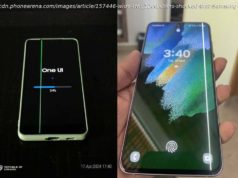Read the in depth Review of Xiaomi Redmi Note 5 4GB Mobile Phone. Know Xiaomi Redmi Note 5 4GB build, design and performance quality along with pros and cons.
Simply by looking at the spec sheet, the Redmi Note 5 can be said to be a Redmi Note 4 disguised under a brighter, taller 18:9 display. But spec-sheets rarely tell the full story. Despite having the same hardware, a lower entry-point in terms of pricing means the same hardware is now more affordable, which will allow Xiaomi to welcome more users to its ecosystem. More importantly, those same users will not be left disappointsed.
The Redmi Note 5 features a bright, tall univisium display, has a better camera than its predecessor (not necessarily the best), and comes with a stellar battery life. It’s everything you can ask from a budget smartphone. If there’s any company that knows how to strike a balance between performance, imaging and battery life, it has to be Xiaomi and the Redmi Note 5 is one of the best example of the fact.
When Xiaomi launched the Redmi Note 4, the mid-range market wasn’t as competitive as it is today. It can be argued that the Redmi Note 4 opened the floodgates to a series of phones powered by the same hardware offered at that sweet price point. Xiaomi had the headstart and was clearly the winner in that segment last year.
But over the course of the year, Xiaomi’s position at the top came under threat multiple times from the likes of Honor with the Honor 7X and the excellent crop of Moto G5 and Moto G5s smartphones that ran stock Android and offered a different experience compared to Xiaomi’s MIUI. Xiaomi itself launched the Mi A1 powered by the latest stock Android and in a poll conducted (and ended prematurely) by Xiaomi on social media a couple of days back, users increasingly voted for stock Android against MIUI.
It was clear that the days of Xiaomi’s monopoly in the mid-range market are coming to an end. And right when the crown was slipping from its hands, the Chinese upstart launched the Redmi Note 5 and the Redmi Note 5 Pro. Just like a certain Cupertino-based company Xiaomi likes to be inspired by, it reserved the big upgrades for the elder Redmi Note 5 Pro, while the Redmi Note 5 only gets the taller display and an upgraded camera.
If this is indeed Xiaomi’s strategy for this year, it could find it difficult to command the same dominance it had last year. By depriving the cheaper variant of a significant upgrade, the Redmi Note 5 may not be taken as a serious contender for your hard-earned money. Nevertheless, the Redmi Note 5, even with the aged hardware, is still a well-balanced device. The juice out of the 4,000mAh battery is astonishingly long-lasting and the new display is going to turn heads. But is that all? Or are there more surprises on offer? We find out.
Build and Design: Late to the party, but well dressed
After a year of Redmi phones donning the same fashion, the Redmi Note 5 is a welcome upgrade. But it does retain some of the retro charm. Despite the taller univisium display, it’s not exactly bezel-less. The top and bottom parts of the screen are quite spacious and a thin, but distinct, black borders runs along the edge of the display keeping it from being truly bezel-less. The corners around the screen are nicely curved to match the corners of the body which makes the content on the screen look a little more seamless.
The old world charm I spoke of earlier is present heavily when you turn the phone around. The rear part is as much seeped in the past as the front is marching forward to the present. It’s an ugly contradiction, really. Apart from the slight difference in width and a rather ugly camera bump, there isn’t much separating the Redmi Note 5 from its predecessor. Ergonomically speaking, it’s not really a bad thing. The rear-mounted fingerprint sensor is still in the most accessible position while the diamond-cut lines render a premium feel.
Can you tell them apart?
Xiaomi’s choice of materials in building the Redmi Note 5 is interesting. The phone is made out of a combination of metal and plastic. The top and bottom sections that house the antennas are plastic while the rest of the phone is made out of metal. Not only does that improve cellular connectivity, it also improves the durability. Metal is more resistant to wear and tear but plastic is a better shock absorber and quite resistant to bends and dents when dropped.
There is an overall symmetry in the design that gives a polished and minimalist feel to the phone. The speaker grill below is matched by another grill on the side for the main microphone. It irked me to find an old micro-USB port instead of a USB-Type C which is quickly becoming the standard. Yet another instance of the phone’s inclination to stick to the past. The symmetry continues along the rear central column housing the camera unit and the fingerprint sensor and on the top is the endangered 3.5mm headphone jack proportionally next to the popular IR-blaster.
The Redmi Note 5 will be offered in four colours — Black, Gold, Rose Gold and Blue. We received the black variant for our review but I particularly have an eye for the blue one.
Display: Taller, sharper, brighter
Xiaomi did spark the trend of bezel-less displays since the original Mi Mix two years back, but the whole of last year saw only one Xiaomi phone in India with the taller univisium display, that too on its successor, the Mi Mix 2. At the same time, rivals Honor, Oppo and Vivo came out with multiple phones with 18:9 displays leaving Xiaomi trailing behind. The Redmi Note 5 addresses that gap and comes with a taller 5.99-inch full HD+ (2160×1080 pixels) IPS LCD display. It takes up most of the real estate. Also, despite the taller display, the Redmi Note 5 maintains the width of a traditional 5.5-inch panel, so you get more screen real estate to play with.
The Redmi Note 5 is not the first phone to sport a taller 18:9 display in its price range, but it’s surely one of the better looking. It’s pleasantly bright with a luminescence rating of 570 nits with auto-brightness turned off. The typical Xiaomi signature of warm tones, deep contrasts and darker blacks are all there. At full brightness, the display may feel a little washed out and sunlight legibility is just about enough.
Xiaomi also offers some customisation to the display, notably in offering three colour modes (warm, standard and cool) and two contrast modes. Truth be told, you will be better off keeping the colours in ‘standard’ mode and maintaining the ‘automatic contrast’ option. There is also a nifty reading mode that puts a monochrome tint over the display much like an e-ink panel.
I did note that the auto-brightness detection is a bit off. It takes some time for the panel to adjust the brightness and contrast to the ambient light. This, however, could be fixed via a future update.
Camera: Small jump, giant leap
The internal hardware inside budget and mid-range phones have become standardised nowadays. It’s easy to predict the chipset and the memory of a device by looking at the price tag. The only differentiating factor, and indeed the most sought after feature, is the camera. The Redmi Note 4’s hardware specs were aped by most of its rivals, but it’s imaging prowess was one of the primary reasons why the phone sold like hot cakes. With a legacy like that, the Redmi Note 5 had a hell of a lot to prove, and prove it did.
For the most part, the camera on the Redmi Note 5 is indeed better than its predecessor. But nothing stellar though. It’s the sort of evolutionary improvement you would expect from one generation to another. The Redmi Note 5 has new camera hardware in the form of a new 12-megapixel sensor with larger 1.25um pixels and f/2.2 aperture. The combination of the larger pixel size and lower aperture allows more light to fit into individual pixels with lesser spillage. The results are better detail reproduction, improved dynamic range and deeper contrasts.
Although, this isn’t the best Xiaomi has to offer. The larger Redmi Note 5 Pro is actually the one with a better camera(s). There is a vertically aligned dual camera stack with one sensor purely for depth-sensing that makes for some stellar imaging capabilities.
Nevertheless, the Redmi Note 5 takes photos that are good and social-media friendly.
Camera app
The Redmi Note 5’s camera is a breeze to use. If you have used a Xiaomi device before, you’ll feel right at home. I particularly like the touch-to-capture option along with the multitude of filters it offers to ‘artify’ the photos. There are multiple modes as well and accessing them isn’t quite as difficult. Finding the ‘settings’ menu of the app is a task though. It’s hidden inside the ‘options’ menu, but once you find it, scroll all the way down and you can tweak the contrast, saturation and sharpness of your photos and even change the aspect ratio all the way up to 18:9.
The pro mode leaves a lot left to be desired though. You can only tweak the white balance and ISO settings. Having the option to play with the shutter speed would have been a welcome addition.
White Balance & Macro
After spending some time with the phone, I realised the image sensor is quite sensitive, so much so, that the performance is somewhat inconsistent. The phone was quick to adjust the white balance of a scene completely with just a slight change in framing the photo.
A slight change in framing throws the white balance off completely
In the same samples, you can see the seriously good detail reproduction. This is the work of the larger 1.25um pixel size in the sensor. Granted, the depth of field isn’t quite as prominent as a phone with a dual camera can produce, but it’d be an injustice to not appreciate the output.
Indoor light
The camera on the Redmi Note 5 is also high on contrasts. This is more apparent in indoor shots with a singular source of light. The camera darkens the edges of the frame to prevent the light from spilling out and overexposing the shot, keeping the area under focus well-lit. This is by no means, an accurate shot, but it’s pleasing to the eye, and for most buyers of budget smartphones, that’s all that matters.
HDR and Outdoor landscapes
Shot without HDR
Shot with HDR on
As for the dynamic range, the Redmi Note 5 is not the best, but it’s certainly better than most. HDR is turned off by default, but once you turn it on, you can notice the difference it makes to the photo when taking shots against direct sunlight by lighting up the portions that are shadowed by the sun.
If you are shooting under a sunny sky, prepared to see highly warmified images. Xiaomi does have a history of making its cameras produce warmer photos, but it seems to have hit the peak with the Redmi Note 5. The images come out warm(ish) even when the sky outside is overcast.
Also, the HDR mode is slow to process the images. It’s not exactly a shutter lag, but the camera app just freezes when the photo is processing.






